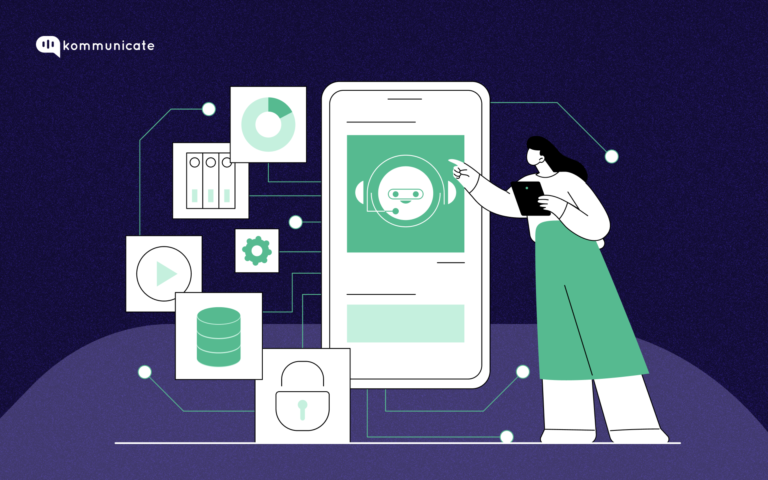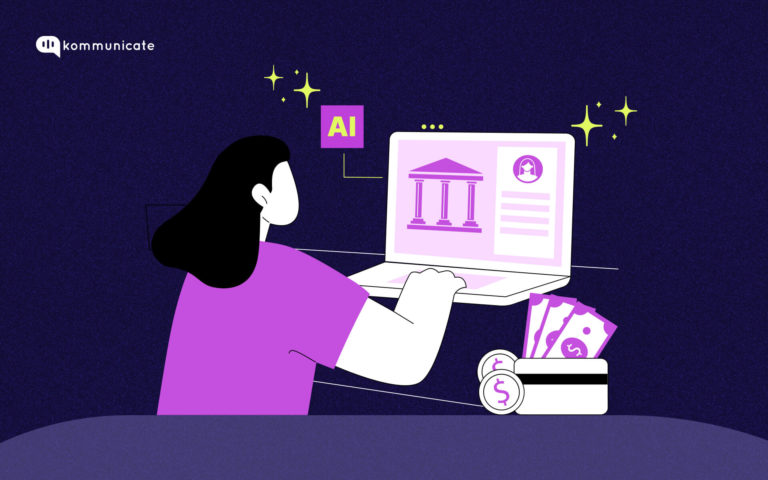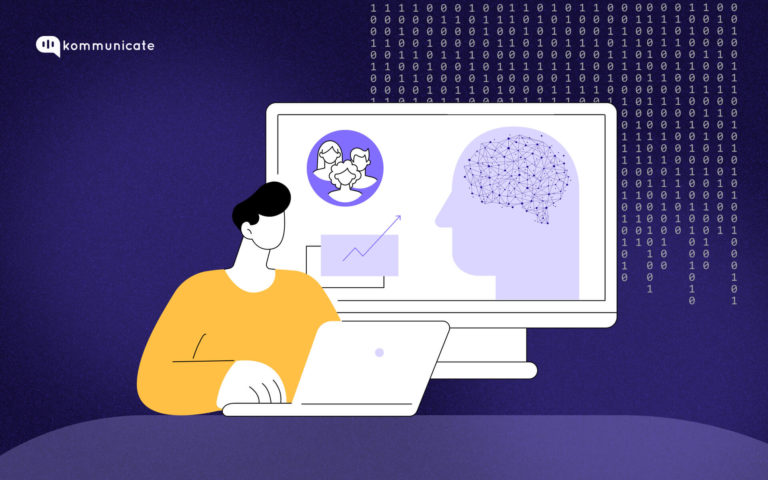Updated on May 31, 2024
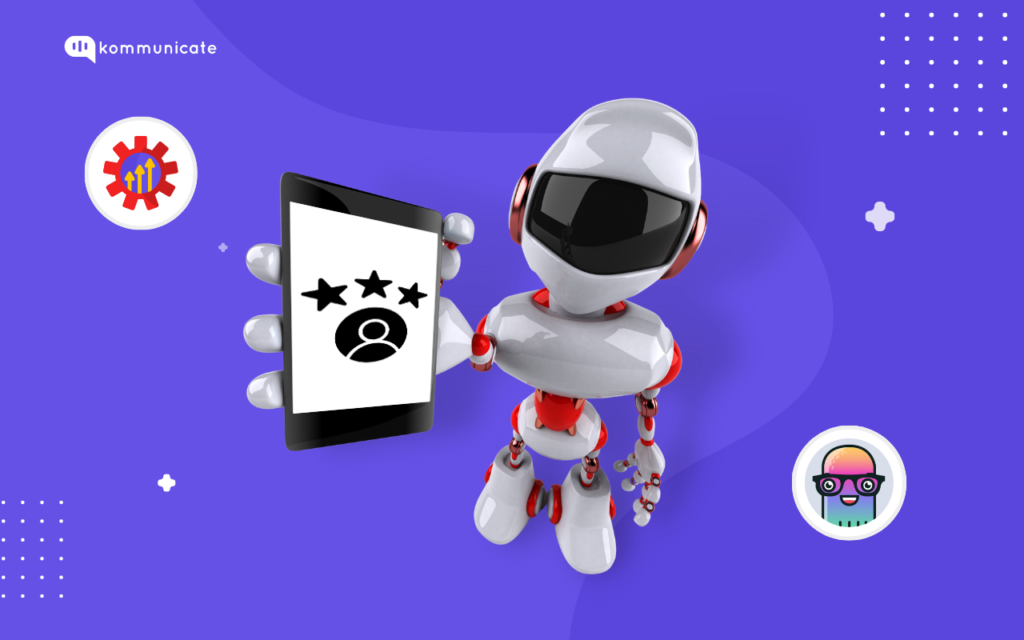
A customer service chatbot has become a requisite for achieving great customer satisfaction. 60% of millennials prefer chatbots to have their queries addressed! While chatbots make a route to savings on customer support costs and valuable time, their interaction with your customers can also be a game-changer in the customer experience domain – for good. 40% of people do not bother whether it is a chatbot or a human agent as long as their query is answered efficiently. Using a customer experience chatbot can be good for your business’s health. Let’s read on it a bit more.
What is a Customer Service Chatbot?
A customer service chatbot is a bot that is programmed to communicate with customers. You can build the bot using Artificial Intelligence (AI), Machine Learning (ML), and Natural Learning Processing (NLP) to interact with the customer. A customer experience chatbot mimics human speech and works as an agent in many ways that make a win-win for both customers and the business.
- Automates everyday tasks
- Simplifies the sales process
- Facilitates 24/7 assistance
- Eases the workload off agents’ shoulders, and
- Prevents long queues
The help a customer service chatbot brings can unfold consistency and greater possibilities for desired customer satisfaction, given the straightforward truth that no customer wants to wait!
The Rise Of Customer Service Chatbots
The world of customer service and support has never been the same since the introduction of customer service chatbots. The rise of chatbots begins with the origin of the very first chatbot, codenamed ELIZA, developed at MIT. Then came Parry in 1972, which became the first natural language program to pass the Turing Test. Parry set a new standard, and the evolution then continued with Racter in 1983 and A.L.I.C.E in 1995, both of which showed advancements in human-like interactions.
In the early 2000s, we saw the emergence of SmarterChild by instant messengers, which took customer-business communication to another level. Siri came out in 2011, and it quickly became a cultural phenomenon.
Today, AI-driven chatbots and virtual assistants are revolutionizing the way in which companies provide personalized and efficient customer service. Chatbots today are capable of understanding natural language and maintaining context. The industries that have adopted these customer service chatbots include e-commerce, finance, healthcare and even manufacturing.
Factors Impacting Customer Service in an Organization
In simple terms, a business makes more money (profits) when its customers are happy. So, how do you bring about this customer happiness? By providing a great customer service. Some of the key factors that impact customer service in an organization include:
a. Technology and Tools:
Companies must put into use the right technology and tools, which will streamline customer interactions and overhaul the entire customer experience. Apple, for instance, has implemented advanced chatbots and virtual assistants that have enabled customers to get instantaneous support.
b. Company-centric culture:
Employees must be empowered to prioritize customer satisfaction by imparting a company-centric culture. Examples of companies that have customer service deeply ingrained in their organizational culture includes hotel chains like Ritz-Carlton.
c. Omnichannel customer experience:
Customers expect a seamless service across multiple channels, including in-person, mobile, online, social media and mobile. Even some of the biggest entertainment companies in the world like Disney has implemented omnichannel customer experiences.
d. Training:
A key factor that affects customer service by companies is providing comprehensive training to agents. Examples of companies that are known for their rigorous training programs include Zappos and Southwest Airlines.
e. Personalization:
Tailoring experiences according to individual customer preferences and needs can create a more personalized and memorable service experience. A good example of a company that uses technology to deliver tailored experiences is Netflix.
Effective management of these factors can significantly enhance customer satisfaction and loyalty, thereby driving business success.
You might also want to read 9 Of The Best Books On Customer Service That You Can’t Miss
How Chatbots Can Improve Customer Service Experience
Implementing a customer experience chatbot is a good way to combat the challenges you may face while juggling many tasks. Here are the indispensable aspects of a customer service chatbot that can accelerate the pace of a business in the long run.
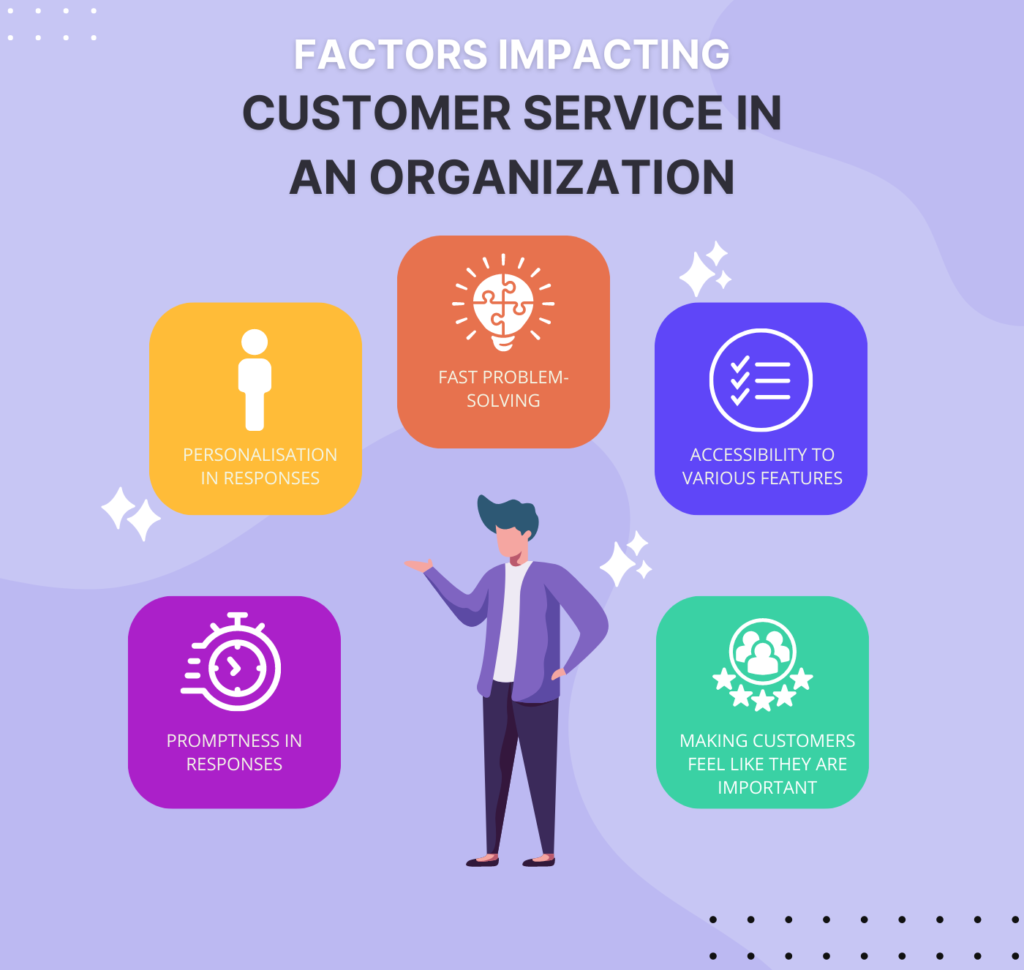
1. Around-the-clock availability
Here’s to the greatest advantage of a customer service chatbot! According to research, customer experience chatbots will be responsible for savings of 2.5 billion hours by 2023. These agents, backed by AI, ML, and NLP, are there for your customers when the world is asleep. So, you don’t have to worry about the queries as a customer service chatbot can address them when they arrive and solve them at their best. Being available for your customers 24/7, there is a boost in customer satisfaction levels. Customers will also appreciate the immediate assistance and feel that they are valued by businesses, fostering loyalty and positive brand perception.
2. Reduced costs
Customer support chatbots are always available to help. They reduce the wait time, resolve issues quickly, and can handle significantly more customers than human agents. It sums up the cost-saving role they play for a company. With a customer experience chatbot available at service, you won’t feel the need to hire many agents since the bot can handle 30% of the interactions. With chatbots handling repetitive queries, there is an acceleration in response times, leading to enhanced customer satisfaction and retention.
3. Also used in promotions and social media
One of the amazing benefits of customer experience chatbots that add value to your overall customer support process is that a bot can work a variety of features on different platforms, such as social media, website, etc. You can also use it for promotions and marketing by capturing customer data. Since chatbots are available on various platforms, including social media, they can bring a new pace to your sales funnel. Chatbots can collect leads by asking users for their information and qualify them based on their interests.
4. Improved email automation
Customer experience chatbots can boost your email marketing errands to a notable degree. An email with a personalized subject line is likelier to be opened by a customer. The personalization is extracted from various data such as customer intent, location, previous experience, etc. Personalized emails can increase open rates by 29% and click-through rates by 41%, according to this report by Campaign Monitor. Despite the growth of other marketing channels, email still holds strong, and if you are not adopting personalized emails in your marketing strategy, you are significantly handicapping your overall marketing efforts.
5. Customization
Another important benefit of a customer experience chatbot is that it provides easier communication with personalized responses. The bot is fast at gathering data and translating that into the responses that best resolve the customer’s problem. From customers’ order history to shopping preferences – a chatbot can frame answers based on their data and simplify communication for them. Chatbots can also provide contextually aware responses to customer queries, responding to specific customer needs and situations. A classic example is a banking chatbot, which can discern if a customer is asking about a recent transaction or about a new loan or a product, giving instant and personalized assistance.
6. High conversion rates
When you assist a customer with your product or service by a customer service chatbot without any wait time or other limitations – they are likely to be more engaged in moving further. Since chatbots are on time, offering personalized experiences to each customer leads to higher conversion rates for a business. Personalized messages, engaging conversion, integration with social media platforms, multi-lingual support, promotions, etc., are some constituents of a customer experience chatbot that make it a wonderful tool for qualified leads.
Also read, How to Increase Conversion Rate Using A/B Testing by 200%?
Future Of Customer Service Chatbots
As artificial intelligence, machine learning, and NLP continue to advance, we are looking at an exciting future for customer service chatbots. Here are some of our predictions for the future of customer service chatbots:
1. Multimodal interactions:
Chatbots will increasingly become adept at understanding and responding to multimodal inputs, such as voice, text, images, and gestures. This will make chatbots even more intuitive, and companies like Apple and Google are at the forefront of integrating multimodal capabilities into their virtual assistants.
2. Seamless human handoffs:
Chatbot-to-human handoff will be increasingly become more seamless, as escalations and customer queries get more complex. Examples of some tech giants that are implementing chatbots that are adept at this human handoff feature includes Airbnb and Uber.
3. Proactive assistance:
Chatbots of the future will be able to anticipate and address customer needs, even before they arise. Amazon’s Alexa bot is already doing this, giving customers proactive suggestions based on their past behavior.
4. Emotional intelligence:
As AI improves, chatbots will become more and more emotionally intelligent. They will be better able to grasp human emotions, giving way to more empathetic and personalized support.
Wrapping Up
A customer service chatbot is not just a fad in the business world. It is here to stay. The global chatbot market is forecast to reach a whopping US $1953.3 million by 2027. Consistency, personalization, and omnichannel assistance are the features of a chatbot that make it a choice among businesses and customers. If you plan to employ one for your business, it is time to plan and consider the best ways to utilize an efficient bot.
At Kommunicate, we are envisioning a world-beating customer support solution to empower the new era of customer support. We would love to have you on board to have a first-hand experience of Kommunicate. You can signup here and start delighting your customers right away.



